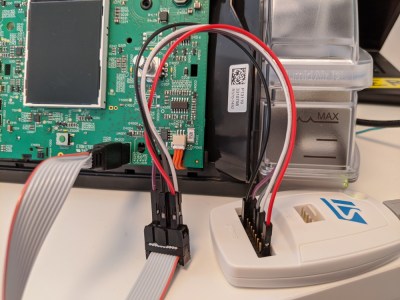Operating under the idea that a Constant Positive Airway Pressure (CPAP) machine isn’t very far removed electrically or mechanically from a proper ventilator, [Trammell Hudson] has performed some fascinating research into how these widely available machines could be used as life support devices in an emergency situation. While the documentation makes it clear the project is a proof of concept and is absolutely not intended for human use in its current state, the findings so far are certainly very promising.
For the purposes of this research, [Trammell] has focused on the Airsense S10 which currently retails for around $600 USD. Normally the machine is used to treat sleep apnea and other disorders by providing a constant pressure on the lungs, but as this project shows, it’s also possible for the S10 to function in what’s known as Bi-level Positive Airway Pressure (BiPAP) mode. Essentially this means that the machine detects when the user is attempting to inhale, and increases the air pressure to support their natural breathing.

Critically, this change is made entirely through modifications to the S10 firmware. No additional hardware is required, and outside of opening up the device to attach an STM32 programmer (a process which [Trammell] has carefully documented), there’s nothing mechanically that needs to be done to the machine for it to operate in this breathing support function. It seems at least some of the functionality was already included via hidden diagnostic menus which can be enabled through a firmware patch.
As many of these CPAP machines feature cellular data connections for monitoring and over-the-air updates, [Trammell] believes it should be possible for manufacturers to push out a similarly modified firmware on supported devices. Of course, the FDA would have to approve of something like that before the machines could actually be used as emergency, non-invasive ventilators. They would also need to have viral filters installed and some facility for remote control added, but those would be relatively minor modifications.
Learn more about the efforts being put into ventilators right now. Start with this excellent hardware overview called Ventilators 101 and then take a look at some of the issues with trying to build a ventilator from scratch.












